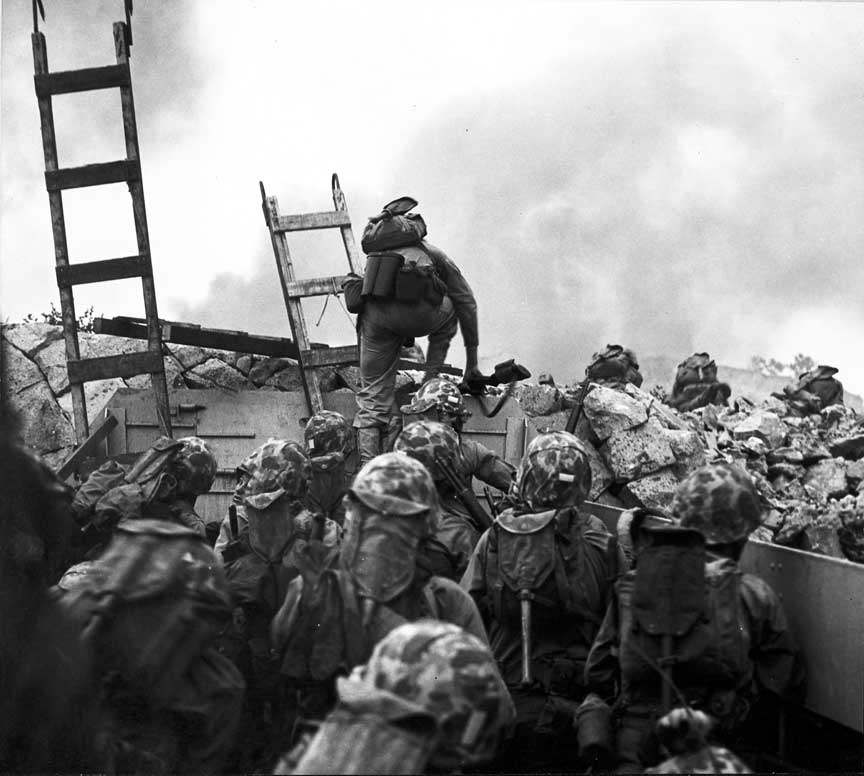Inchon Invasion

Landing in Inchon
In a masterful military act- General MacArthur devised a plan for US troops to make a landing at Inchon near Seoul in the rear of the North Korean troops. The attack was successful and totally outflanked the North Korean Army.
General MacArthur, commander of UN troops in Korea, had from the very start believed that the path to victory in Korea was a flanking amphibious assault. McArthur had successfully led a series of amphibious assaults in the Pacific during World War II. MacArthur wanted to land at Inchon, the port city serving Seoul, which was 20 miles inland. MacArthur had to overcome the opposition of the Joint Chiefs of Staff, but soon had approval for his plan and, more importantly, received the Marine 1st Division to carry out the assault itself. Major General Edward Almond, MacArthur's chief of staff, was appointed the commander of the invasion force.
On September 10, a fleet of 230 vessels set off from Japan for the beachhead at Inchon. Inchon had both an inner and outer harbor. To successfully land at Inchon, it was necessary to capture Wolmi-do Island in the harbor. Because of the tides, it would be essential first to attack Wolmi-do; and then, the next day, it was possible to attack Inchon.
On the evening of September 15, after a day of bombardment, the Marines began their invasion of the island. The Marines quickly achieved their first objective - Radio Hill. Within an hour, the island was in American hands. The Marines suffered only 17 wounded, none serious. The North Koreans. However, lost 108 dead and 136 captured, while more were entombed in the rubble.
By the late afternoon of the 16th, landing craft once again set off, this time for Inchon. At 5:30, the first of the boats reached the Inchon shore, which in this case was a high sea wall. Quickly, the Marines came ashore. Despite seemingly losing the element of surprise, the Marines overcame the defenders, suffering low casualties. The Marines lost 20 dead and 174 wounded. The North Koreans lost a total of 1,350 men. The Marines quickly moved inland. On the first day, the Marines advanced 10 miles inland towards Seoul. Early the next morning, six North Korean tanks attempted a counterattack. Within moments, well-armed and trained Marines destroyed all six tanks.
 >
>